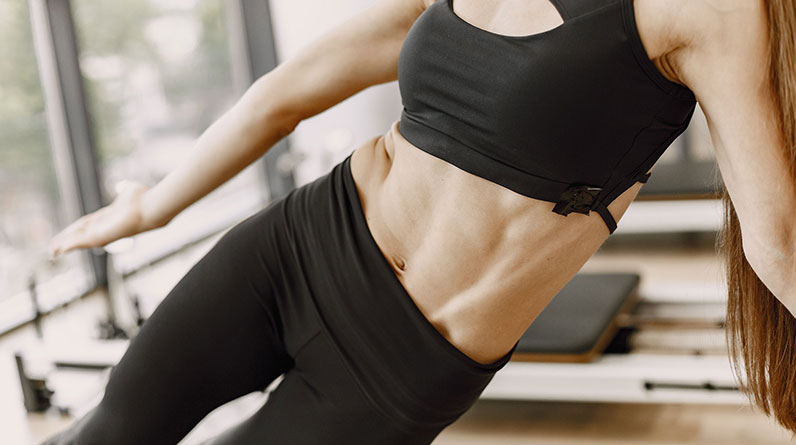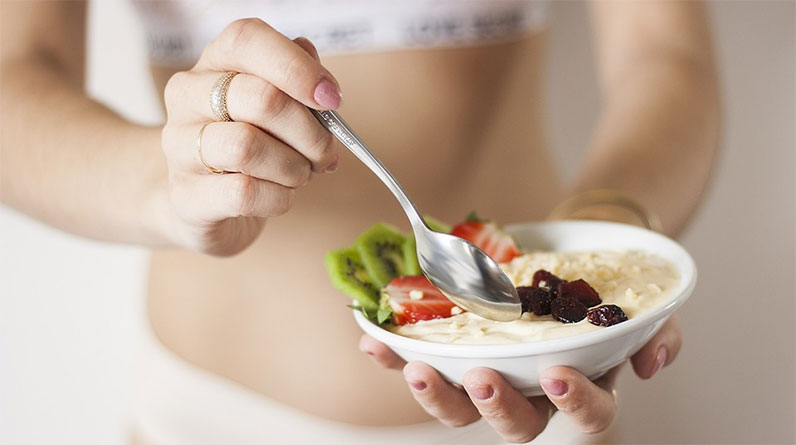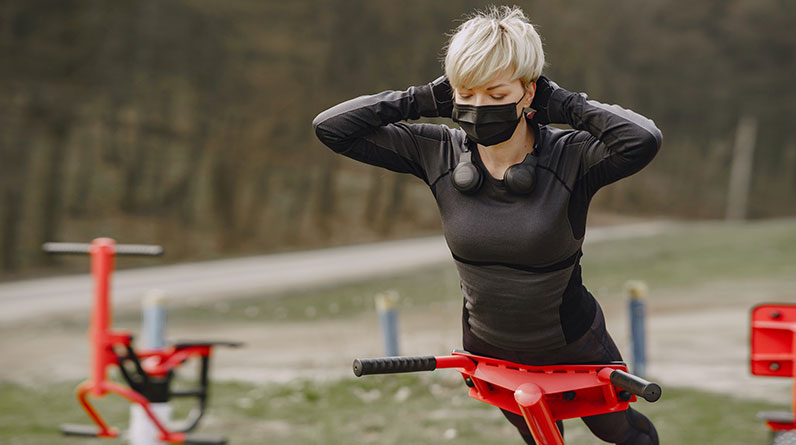
The Role of Genetics
Genetics plays a significant role in determining your body’s ability to achieve a six-pack. However, if you follow a healthy diet and exercise regularly, you can achieve a set of abdominal muscles that’s fit and toned.
It’s important to note that the number of rectus abdominis bands of connective tissue (fascia) you have is entirely predetermined by your genes. That’s why some people can only get a four-pack and others are born with eight or 12 intersections.
Genetics
Getting six-pack abs is something that many people strive for. While they can be achieved with proper diet and exercise, genetics play a big role in whether or not you’ll have a defined set of abdominal muscles.
The number of ab muscles you have is completely based on your genetics, which determines the number of bands in your rectus abdominis muscle that form distinct sections or “packs” down the front of your abdomen. Some people have three packs, while others have four or eight.
You can get a clear idea of how many bands you have by doing a simple self-assessment. Stand up straight and grab the skin and fat at belly button level with your fingertips, digging inwards to feel and locate tendinous intersections between each ab muscle.
If you’ve got 3 horizontal ridges between your abs, you’ll have a 6 pack; 4 ridges will mean an 8 pack; and five ridges will be a 10 pack. The number of horizontal ridges you have also affects how hard it is to see your abs from the front.
This difference is subtle, but it’s an important one to understand if you want to get visible abs. It’s also very difficult to achieve, as you have to be very lean and have strong core development in order to see all of these ridges clearly from the front.
But if you’re lucky enough to have the right genes, you can definitely achieve a set of washboard abs! But you’ll need to be willing to commit a lot of time and effort to get them.
As a matter of fact, achieving defined abs is so popular that there are even gyms dedicated to helping people achieve these results. If you’re looking to build a set of six-pack abs, here are some things that you should know before starting any workout regimen.
The role of genes in determining your body shape is called heredity, and it’s a fascinating subject that’s being studied by scientists worldwide. It’s also a field that’s becoming increasingly relevant as scientists search for new ways to treat diseases and develop crops that are more resistant to insects or drought.
Diet
While it’s true that a healthy diet and regular exercise are essential for building muscle, it’s also important to understand that there is no one-size-fits-all plan. Regardless of what you do, your results are always going to be based on your genetics and body shape.
The best way to make sure you’re getting the nutrients you need to build abs is by eating a well-balanced diet that includes nutrient-dense, low-calorie foods. You’ll want to include fruits and vegetables as well as lean proteins and healthy fats in your meals.
You’ll also want to avoid over-consuming calories, especially those from sugar and processed foods. Eating too many calories is often associated with weight gain and obesity, so you should aim to consume fewer calories than you burn each day.
In addition, you’ll want to eat plenty of fiber-rich, whole foods like fruits and veggies. These can boost your metabolism and keep you feeling fuller longer. They also contain vitamins and minerals that help regulate blood pressure, blood sugar levels, and lipid profiles.
Nuts and seeds are also great options for a six-pack diet, as they’re high in protein, fiber, and healthy fats. They’re also a good source of vitamins and minerals, including antioxidants that reduce inflammation.
However, be aware that consuming too many nuts can increase your risk for diabetes and heart disease. In fact, a 2015 study in the Journal of the American Medical Association found that people who consumed too many nuts were twice as likely to develop type 2 diabetes as those who avoided them.
A six-pack abs diet should also include a few servings of low-fat dairy products, such as yogurt, cheese, and milk. These foods can help you lose weight and gain healthy muscle mass, which can lead to defined abdominal muscles.
Another great option for a six-pack abs diet is to eat more lean meat, such as chicken and turkey. These proteins are rich in nutrients and are known to promote muscle growth.
Finally, you should be sure to get enough sleep, as studies have shown that sleep deprivation increases ghrelin and leptin production. Both hormones are responsible for regulating hunger and fat storage in the body. A poor night’s rest can cause you to put on extra pounds, which will decrease your ability to show off your abs.
Exercise
Achieving six-pack abs is a goal that most fitness enthusiasts aim to achieve, and it’s one that requires a combination of diet and exercise. The truth is, there’s no “one size fits all” approach to achieving abs; genetics, body shape, and build will always play a role in how well you reach your goals.
There are some things you can do to help make your abs more defined, such as building a stronger core, increasing muscle mass, and improving cardiovascular fitness. However, the best way to get chiseled abs is by improving your full-body strength and conditioning and training your physique all over.
The muscles that give your abs the appearance of a six-pack are called the rectus abdominis. They’re made up of a long, flat sheath of fibers that extend between your pubic bone and lower ribs. They’re separated by strong tendons, and three tendon creases segment the muscle horizontally.
Your genes determine the symmetry, length, and size of the connective tissue bands that divide your rectus abdominis into sections that give you the appearance of four, eight, or even ten “packs.” You’re born with a specific number of those bands, no matter what exercises you do to build them.
You’ll also notice that the abs of athletes and other fit people look different from those of less-fit individuals. That’s because the muscles of athletes and fit individuals are built with more fat-burning power, which means they burn more calories during workouts and while resting.
But it’s important to remember that your abdominal muscles don’t have to be a washboard to be impressive. There are plenty of fit individuals with perfectly toned abs that don’t have the infamous six-pack look.
You can’t just work out your abs, and you can’t lose your belly fat without losing your overall body fat percentage. A healthy body fat percentage for most people is between 15 to 20 percent for men and 20 to 25 percent for women, says Kinsey Mahaffey, MPH, a Houston-based fitness educator, personal trainer, and health coach. She recommends aiming to lower body fat by about 10 percent in order to have visible abs.
Lifestyle
A lifestyle is a way of living or style of living that reflects an individual’s attitudes, values, and worldview. Often, it includes patterns of social relations, consumption, entertainment, and dress. It is a complex construct and varies from person to person.
A good lifestyle involves a healthy diet, plenty of sleep, and an exercise routine that is effective at building strength, stamina, and muscle mass. It also includes a social life, including your pursuit of interests and the respect you receive as a member of society or in your work or profession.
The key to a successful lifestyle is to develop a plan that allows you to meet your goals while still maintaining health and quality of life, says Madia. This involves tracking your macronutrients (carbohydrates, fats, protein) as well as eating a balanced diet that is full of nutrient-rich foods, such as fruits, vegetables, whole grains, and lean proteins.
Eating a high-protein diet is the best way to build lean muscle. It also helps you stay full longer and prevents binge eating, which is a common cause of weight gain and excess body fat.
Carbohydrates are essential for energy, which your muscles need to perform workouts and recover afterward. They also help fuel your immune system, aid digestion and stabilize blood sugar levels. They can be eaten in moderation, but they do not need to be the main part of your meal.
Many people think that carbohydrates are bad for you, but they’re actually beneficial when incorporated into a healthy diet. They boost metabolism, burn fat, and provide a source of energy for your workouts, according to the American Council on Exercise.
A healthy diet should include plenty of fresh fruit and vegetables, whole grains, and a moderate amount of protein, says Madia. It also needs to be balanced and low in saturated fat, trans fat, salt, sugar, and processed foods.
While it is possible to get a six-pack from genetics alone, it is much easier and faster to achieve abs by creating a positive lifestyle change. By changing your eating habits and incorporating an exercise routine, you can begin to see results within a year or two.





